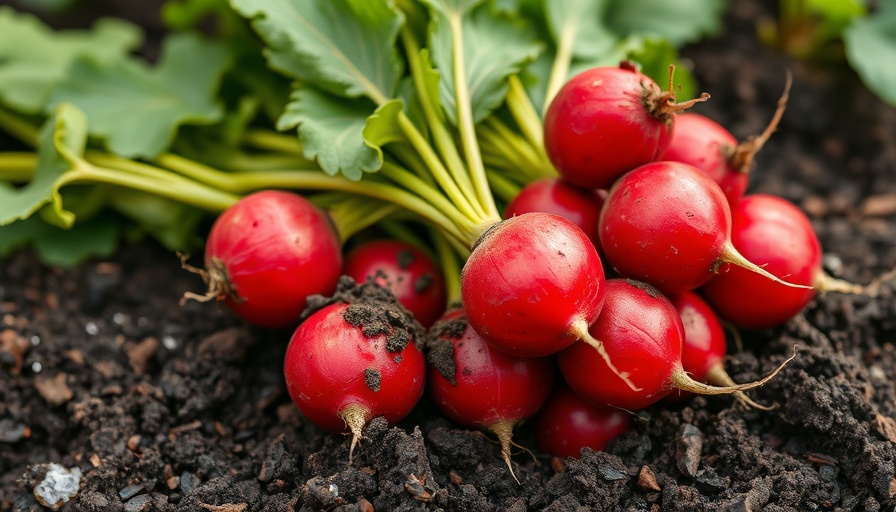
Unlock the Secrets of Radish Harvesting
Growing your own radishes can be a rewarding experience, not only because of the plants' quick growth and tasty rewards but also because they add vibrant colors to your garden. Whether you're a seasoned gardener or taking your first steps in vegetable gardening, knowing when and how to harvest your radishes is key to enjoying the best flavor and texture. Let’s dive into the details!
Understanding Radish Varieties and Their Harvest Times
Radishes come in many varieties, and each type has a different time to maturity, which is pivotal for successful harvesting. Generally, radishes can be categorized into two main types: small and large. Small varieties, such as 'Cherry Belle' and 'Early Scarlet Globe', can be harvested within 20 to 30 days, while larger varieties, like 'Green Luobo' and daikons, often take up to 90 days. Always check the seed packets for the estimated growing period, and consider noting them in your gardening planner to simplify the process.
Timely Picking for Optimal Flavor
The ideal time to harvest is when the roots have reached their full size—this is when they are crunchy and most flavorful. The anticipation builds as you watch your radishes grow. A well-timed harvest can enhance your dishes, whether they're going into fresh salads, kimchi, or hearty winter stews. If you let them sit too long in the soil, radishes can become woody and lose their delightful crunch, turning your salad into a disappointment.
Harvesting Techniques: How to Lift Your Radishes
When it’s time to harvest, the method depends on the size of the radishes. For small varieties, hand-pulling is usually sufficient. Gently loosen the soil around the root to avoid breaking it. For larger radishes, such as daikons, using a garden fork may be necessary to penetrate the soil deeply without damaging the roots. A little extra care goes a long way in preventing bruising and ensuring that your radishes remain in excellent condition.
Practical Tips for Storing Your Harvest
After harvesting, proper storage will keep your radishes fresh. Remove the leaves to prevent the roots from wilting and store them in a cool, dark place. Some gardeners even opt for soaking their radishes in water for a few hours before storing them to maintain their crispness. Consider using perforated plastic bags, as these can help regulate humidity, extending the life of your harvest.
The Joy of Sharing Your Bounty
Harvesting radishes not only fulfills your culinary needs but also opens opportunities for sharing. Gather friends or family for a radish-picking day, perhaps incorporating a cooking session afterward to enjoy the fruits of your labor. Sharing your homegrown produce not only strengthens relationships but promotes sustainable practices within your community.
Incorporating Radishes into Your Diet
Once your radishes are harvested and stored, consider the various ways to use them in your cooking. They can be sliced into salads, roasted for a warm side dish, or added to stir-fries for a peppery crunch. Their versatility makes them a great addition to almost any meal. And don't forget to save some seeds for next season’s crop!
Radishes are not just about gardening; they symbolize the joy of cultivating something from the ground up. So, whether you're looking to indulge in homemade salads or simply want to experience the pleasure of gardening, knowing when and how to harvest your radishes can lead to delightful culinary adventures.
Feeling inspired to grow your own radishes? Start your vegetable gardening journey today with confidence!
 Add Row
Add Row  Add
Add 




Write A Comment